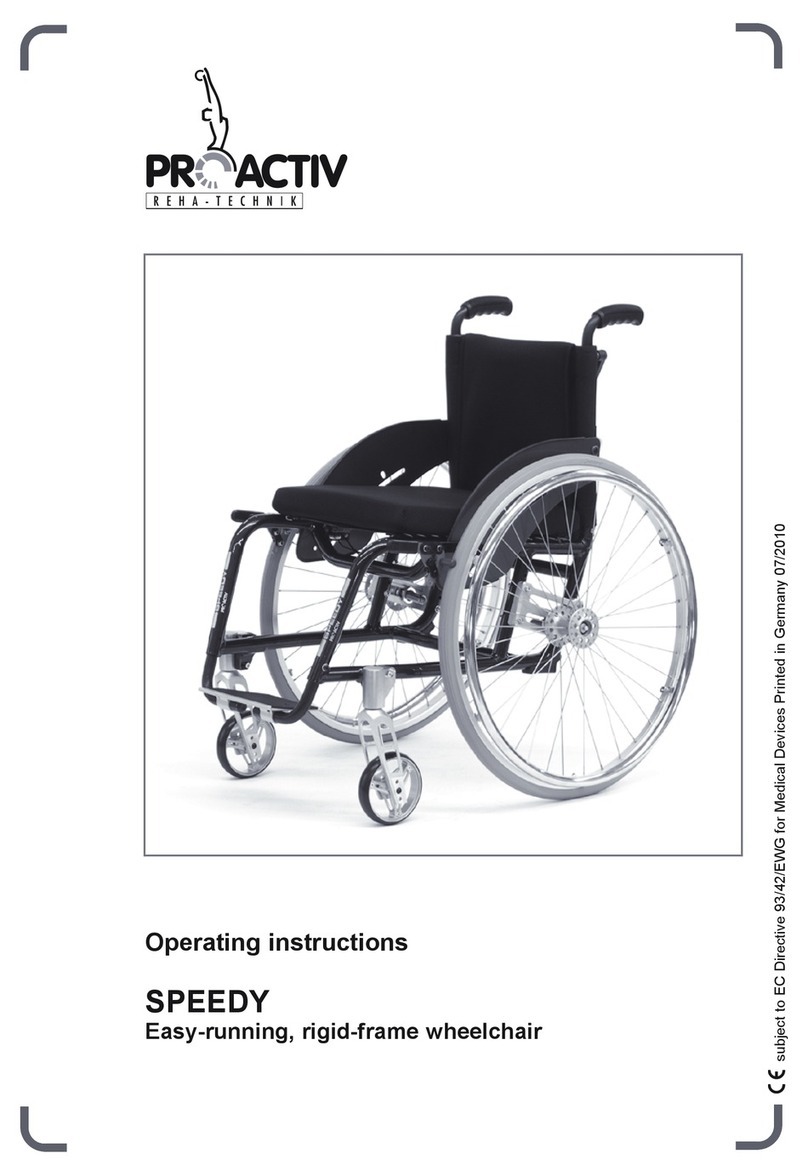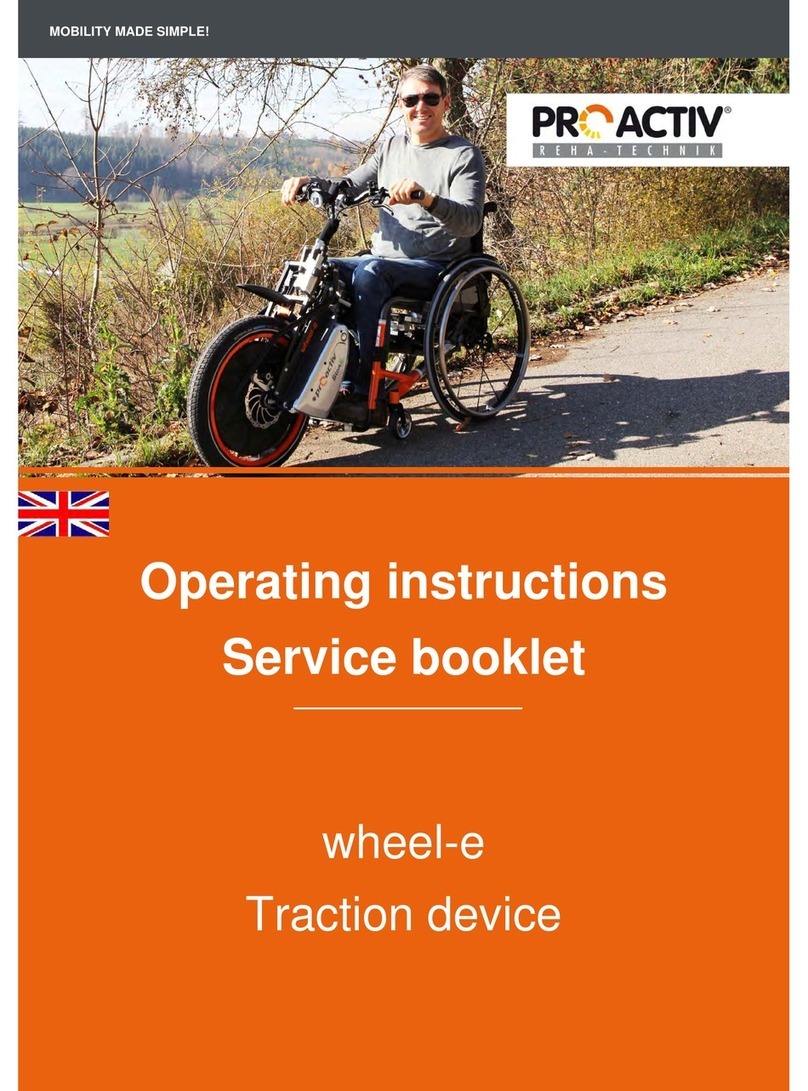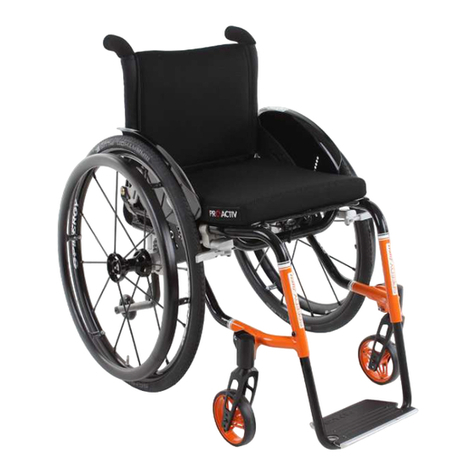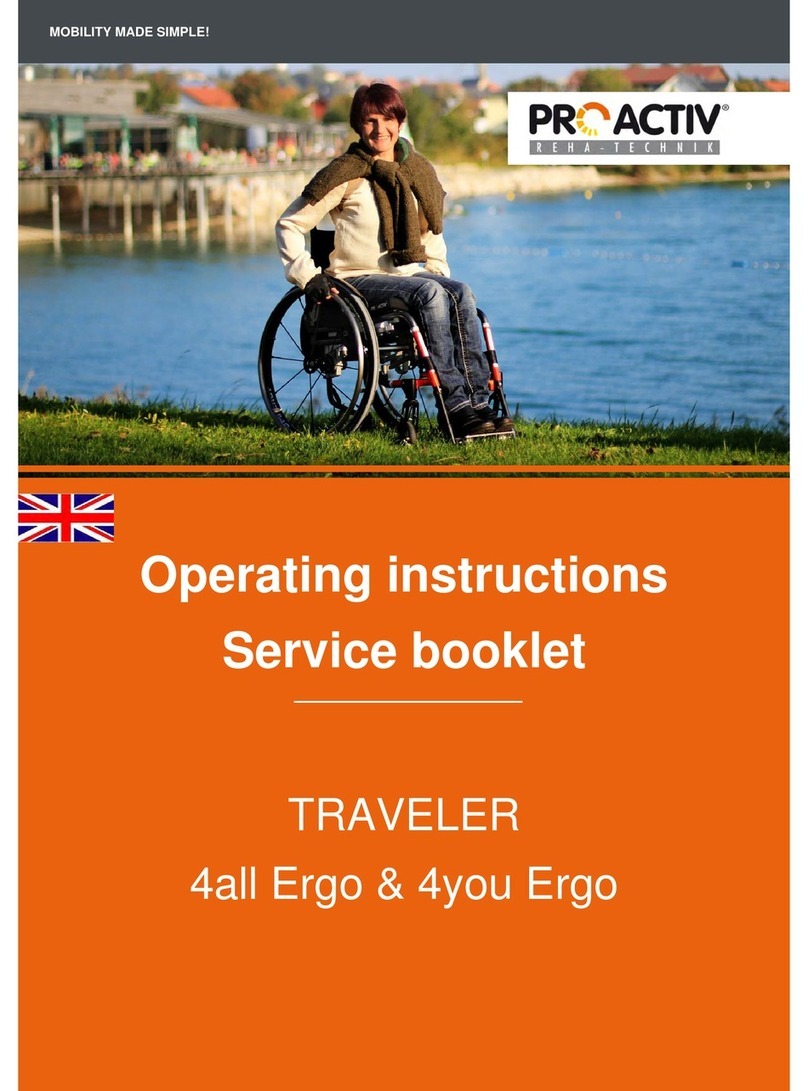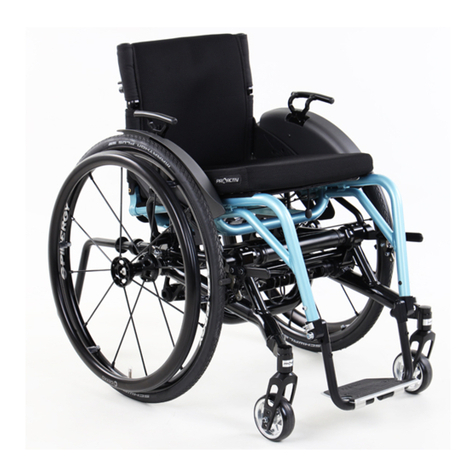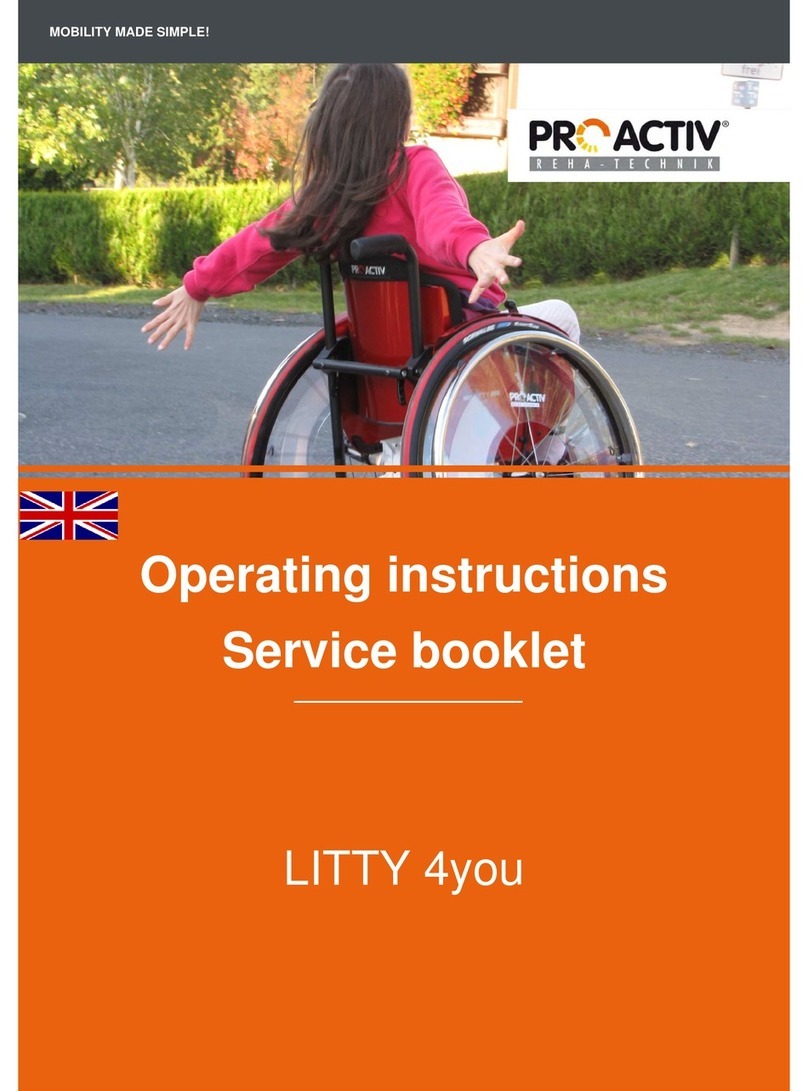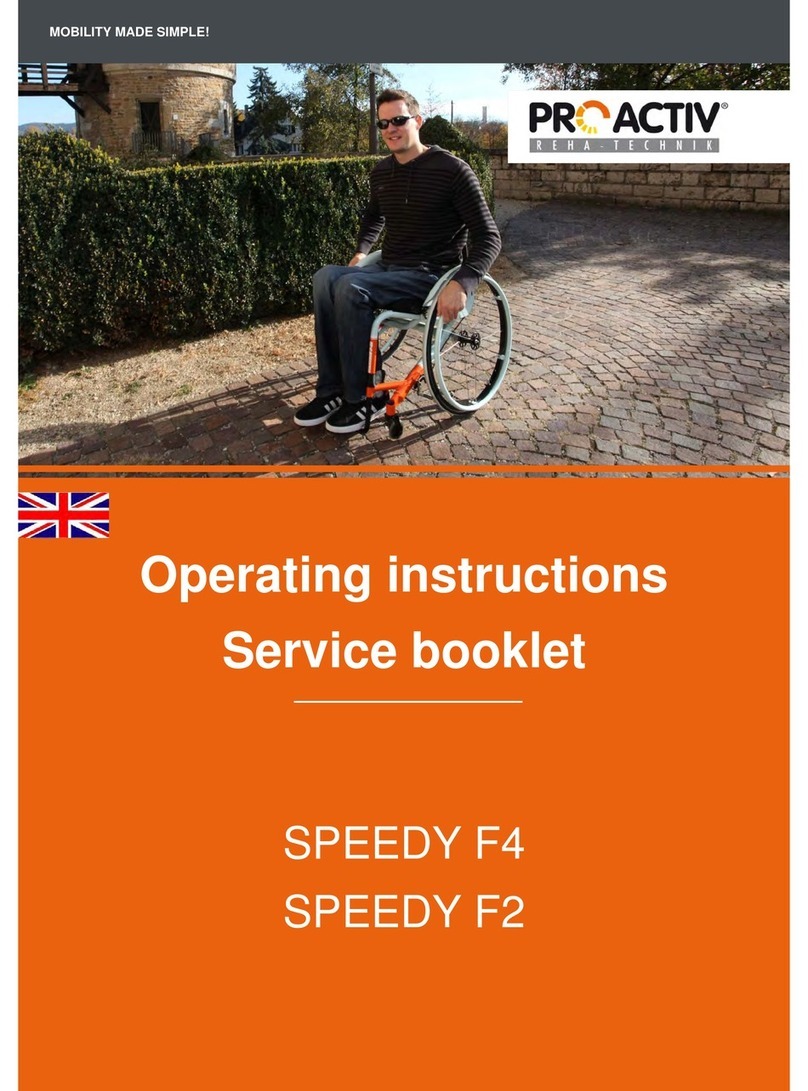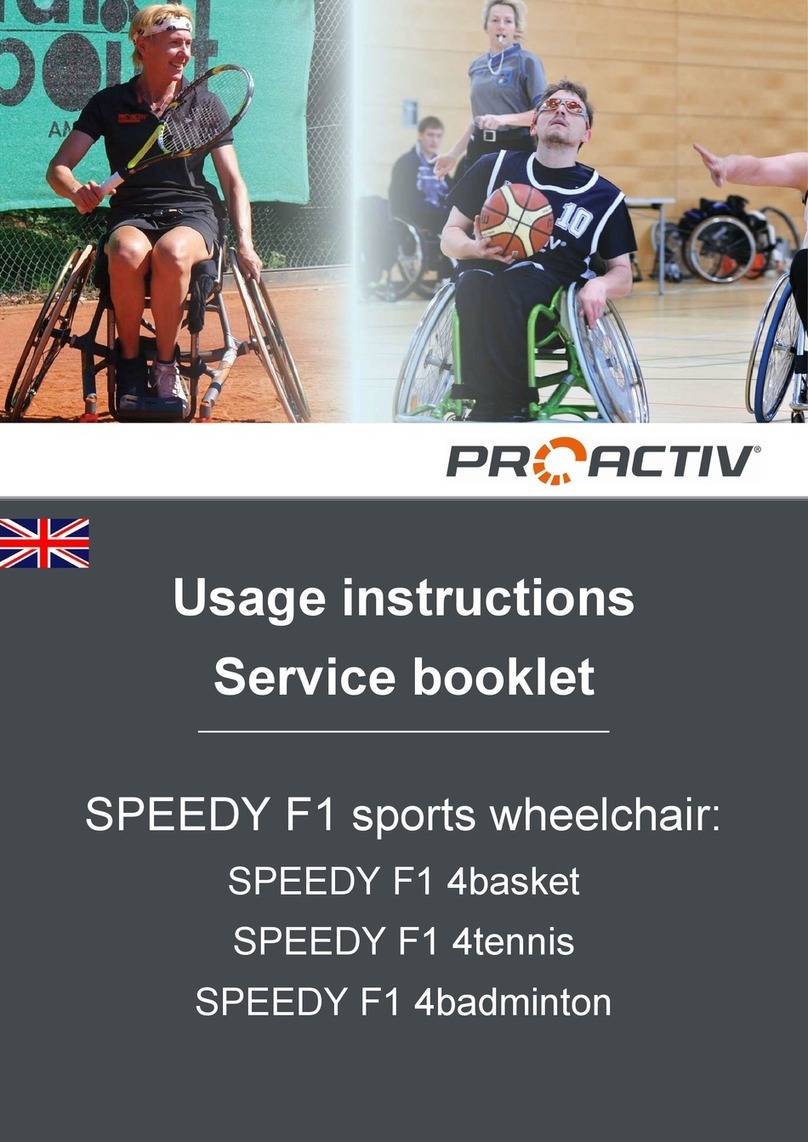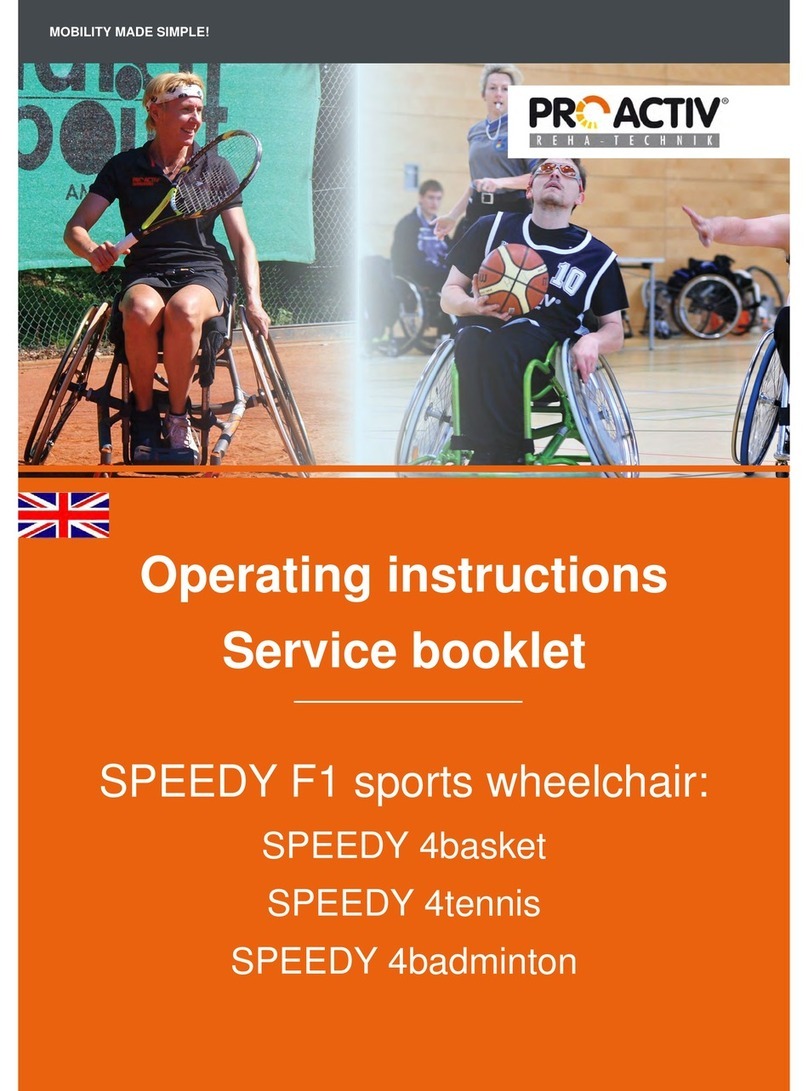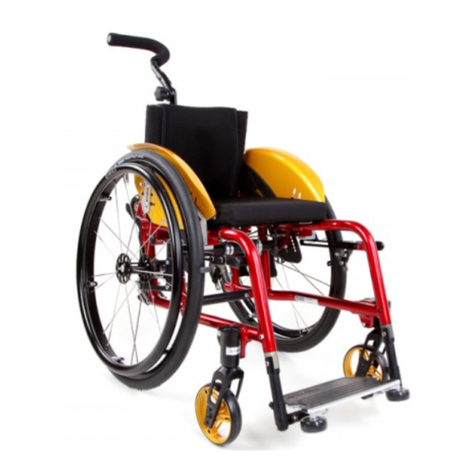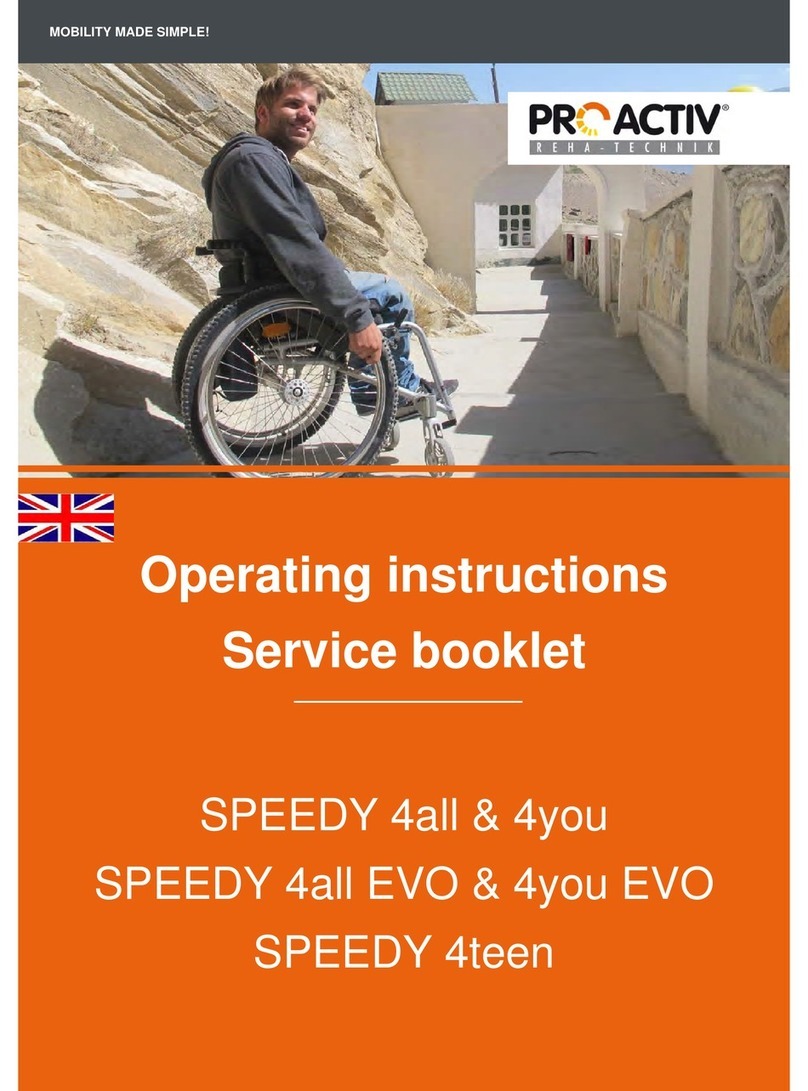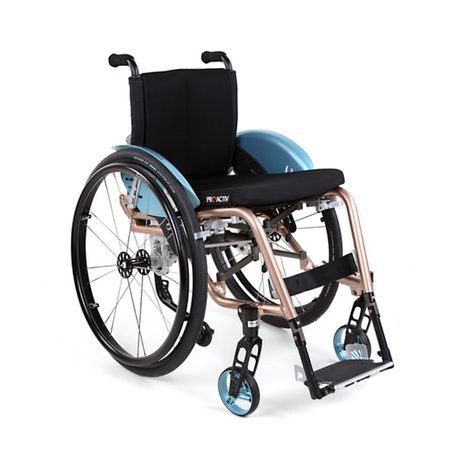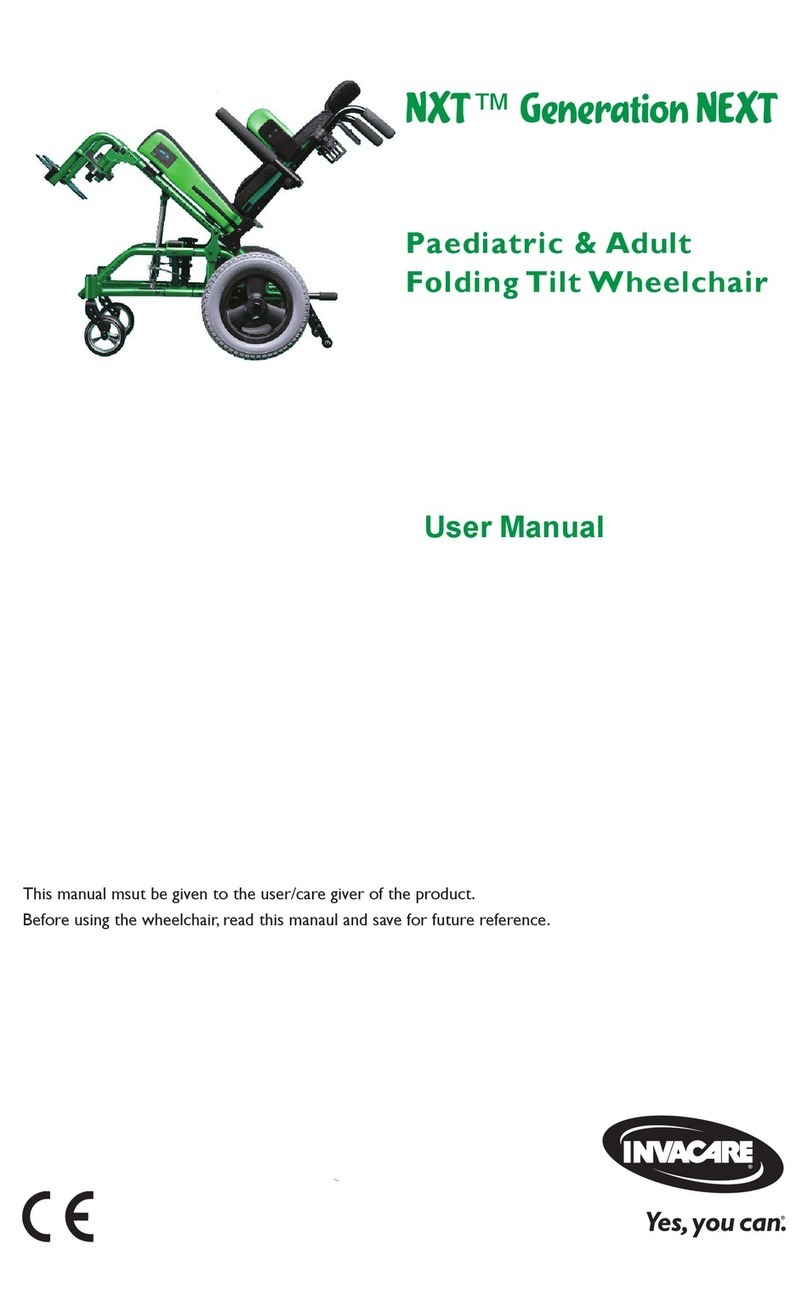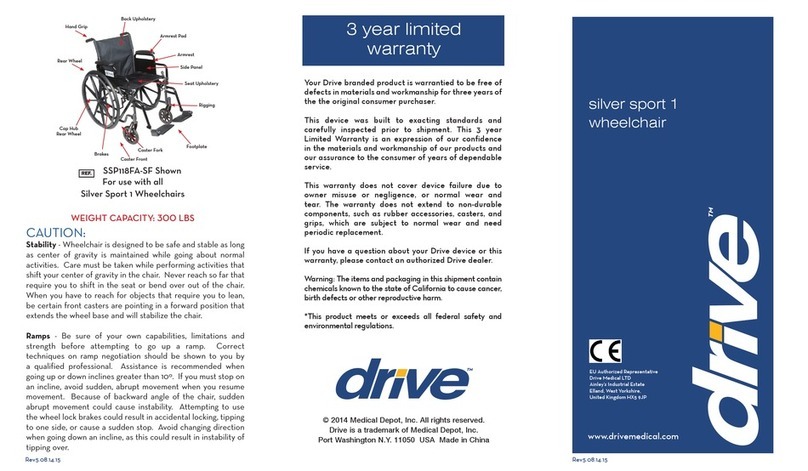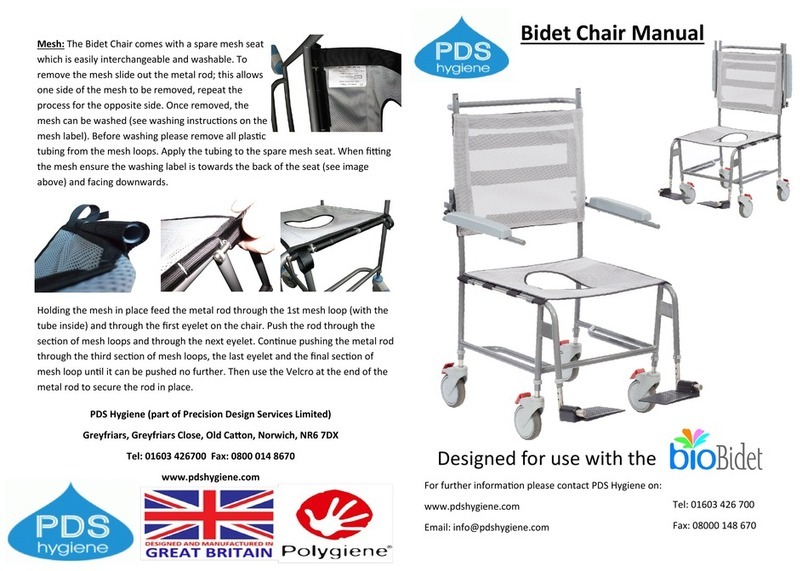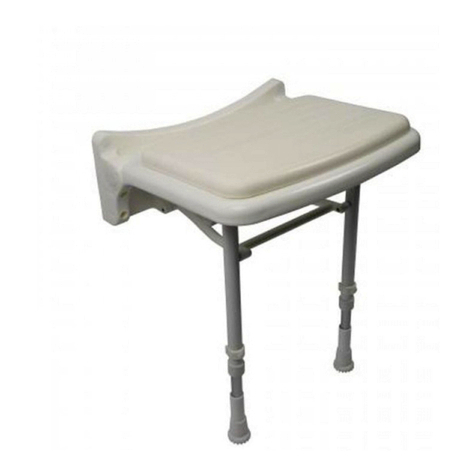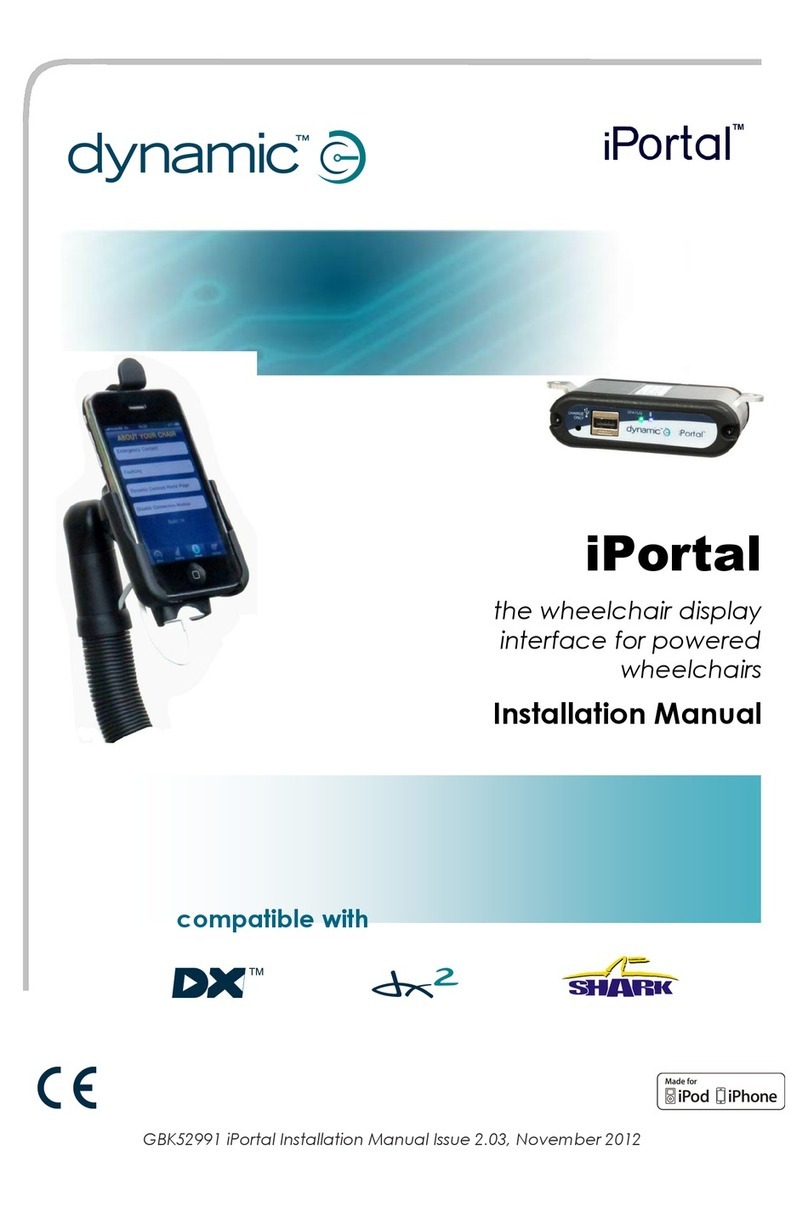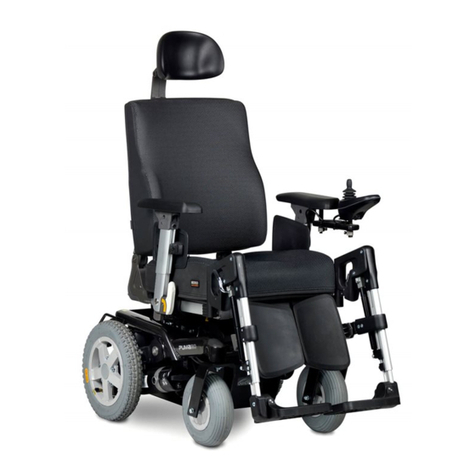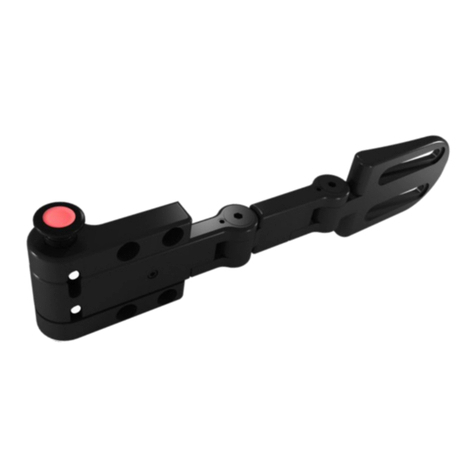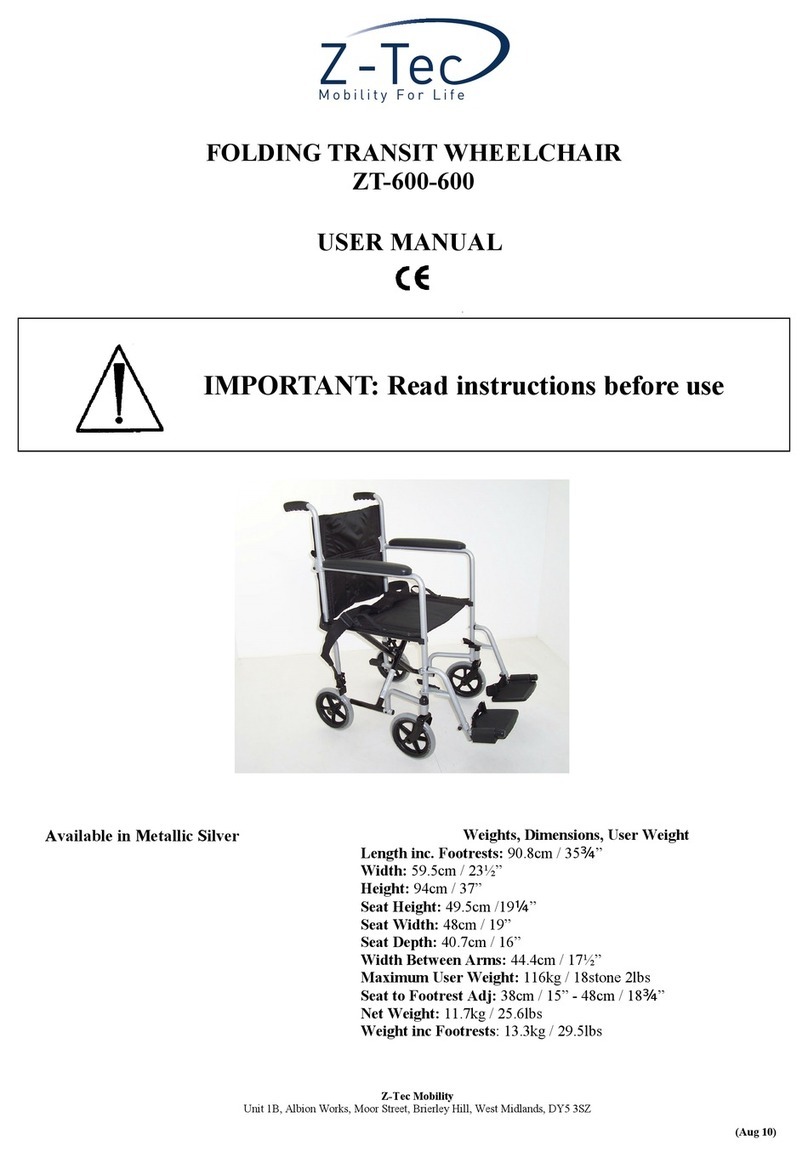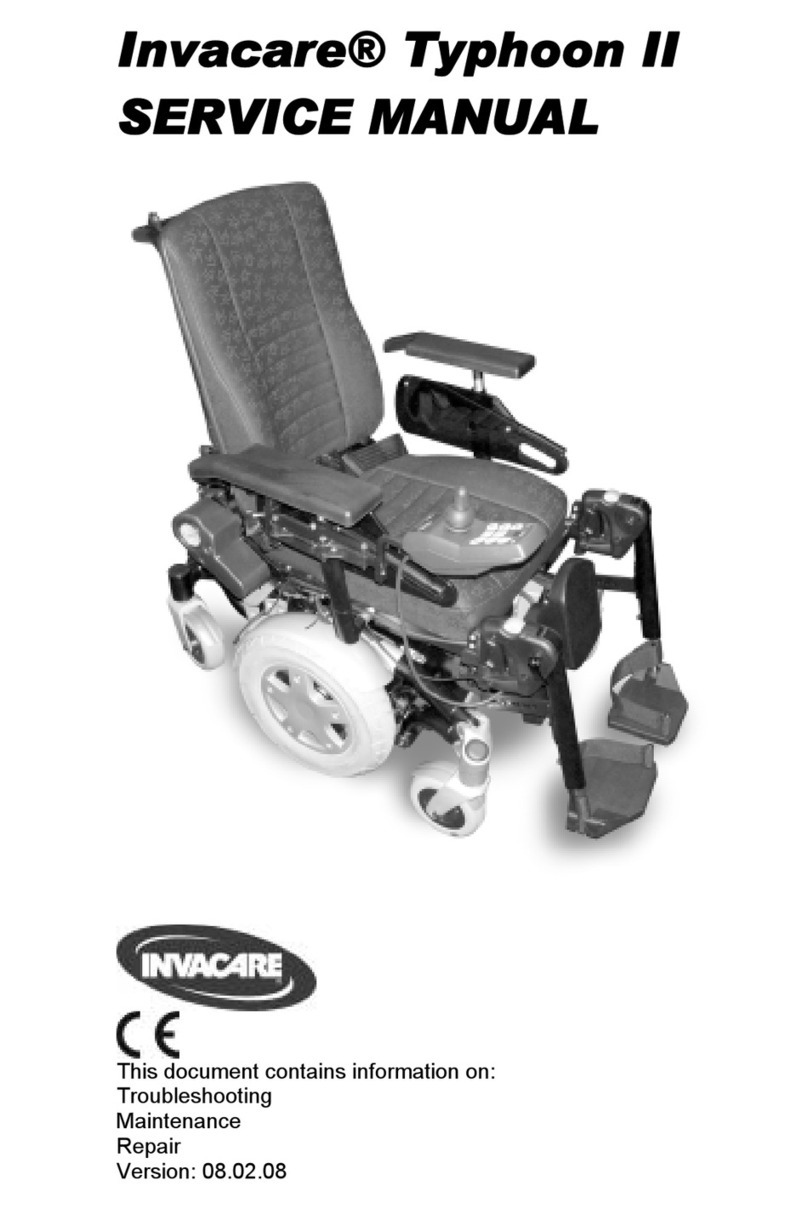
Usage instructions LITTY 4all & 4you
8
11 Introduction to the product and
the surroundings
During the initial commissioning of the product,
drive at minimum speed and become accus-
tomed to the driving characteristics of the prod-
uct. Always adapt the speed and driving ma-
noeuvres to match your own abilities and ex-
ternal circumstances. You will get a feel for
how to use the product safely after a short
time. Before driving up or down slopes or hills
with the product, you should be proficient in the
safe handling of the product on the flat.
Practice bending, gripping, routes and getting
out, until you know the limits of your abilities.
Allow yourself to be assisted until you know
what can call falls or tips and how to avoid it.
Get to know the environment in which you wish
to use the product. Look out for obstacles and
learn how to overcome or avoid them.
12 Safety instructions – prior to
driving/use
When getting into the wheelchair, do not
tread on the footrests as this may tip the chair
over.
Before every trip, check the condition of
the wheels (e.g. visual inspection of the spokes
and rims, check the tyres for damage, foreign
bodies and crack formation). If you have any
doubts about the serviceability of the product,
stop using it.
Check tyre pressures at regular intervals.
Ensure that you comply with the manufactur-
er's specifications which can be found on the
tyres. If the tyre pressure is too low, the opti-
mum functional capability of the knee lever
brake is not guaranteed, and an excessively
low tyre pressure influences the driving behav-
iour. Apart from that, there is an increased risk
of a flat tyre.
Before starting out, check that the
product's brake works. You are not allowed to
take trips if the brakes are not fully functional.
Check the stable condition of the seat
and back system at regular intervals and in
case of doubt, have your rehabilitation special-
ist dealer assess its condition.
Always ensure that your feet cannot slip
off the footplate support when using the prod-
uct.
Before using the product, ensure that the
anti-tipping supports are in the operating posi-
tion and are functional.
Due to environmental effects, it is possi-
ble that the properties and therefore secure at-
tachment of the push handle covers may
change detrimentally. For this reason, it is im-
portant to check the handles are tightly fitted
and fixed in position prior to use. If this should
no longer be the case, then the push handles
may not be used until they have been fixed.
Before each use of the product, make
sure that the anti-tipping supports and push
handles are firmly attached and the quick-re-
lease axles on the caster and drive wheels are
also securely locked in place.
Depending on the equipment, the product
may have folding/closing mechanisms that
pose a risk of crushing injuries (e.g. pinching
your fingers). For this reason, please allow
your rehabilitation specialist dealer to explain
how to work these mechanisms and then have
a go yourself under instruction.
If required, you can have your product
equipped with a suitable chest or lap belt.
Make sure that the belt is worn so that it does
not negatively affect your breathing, cannot
strangle you if you fall or tip out of the product
and so that you can easily remove it yourself.
Make sure that the passive illumination
(reflectors) are always on your product, are in
perfect condition and are clearly visible.




















